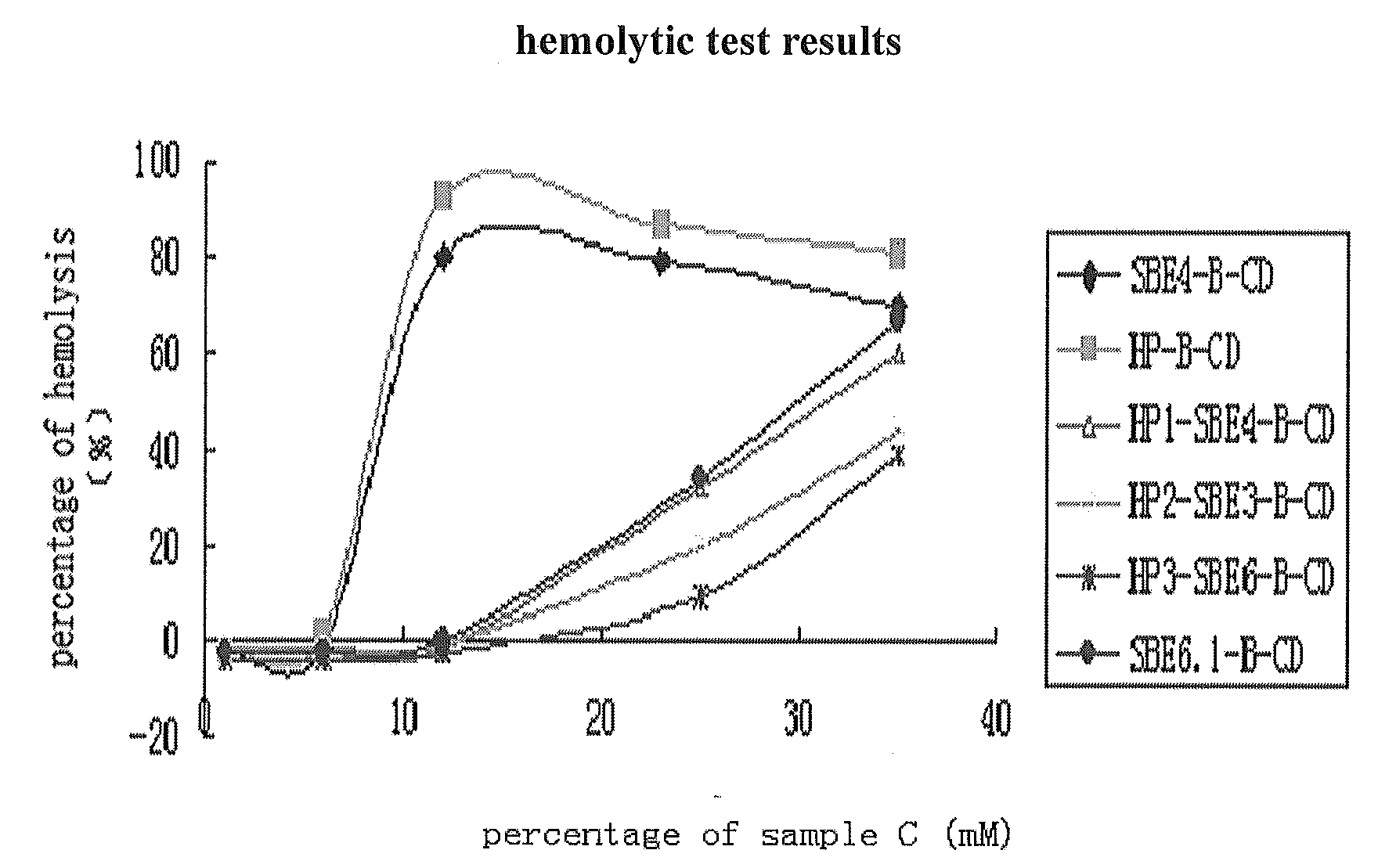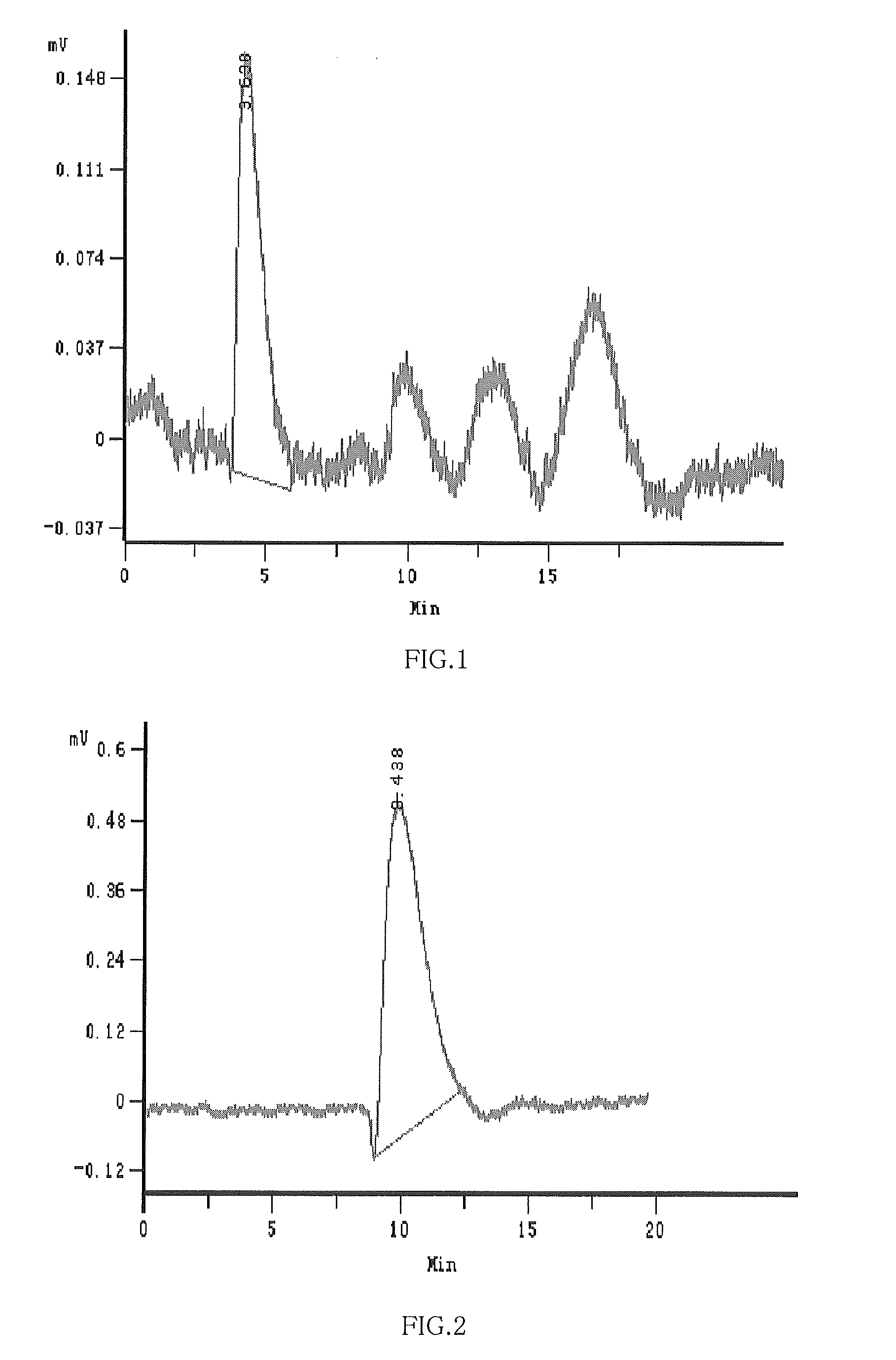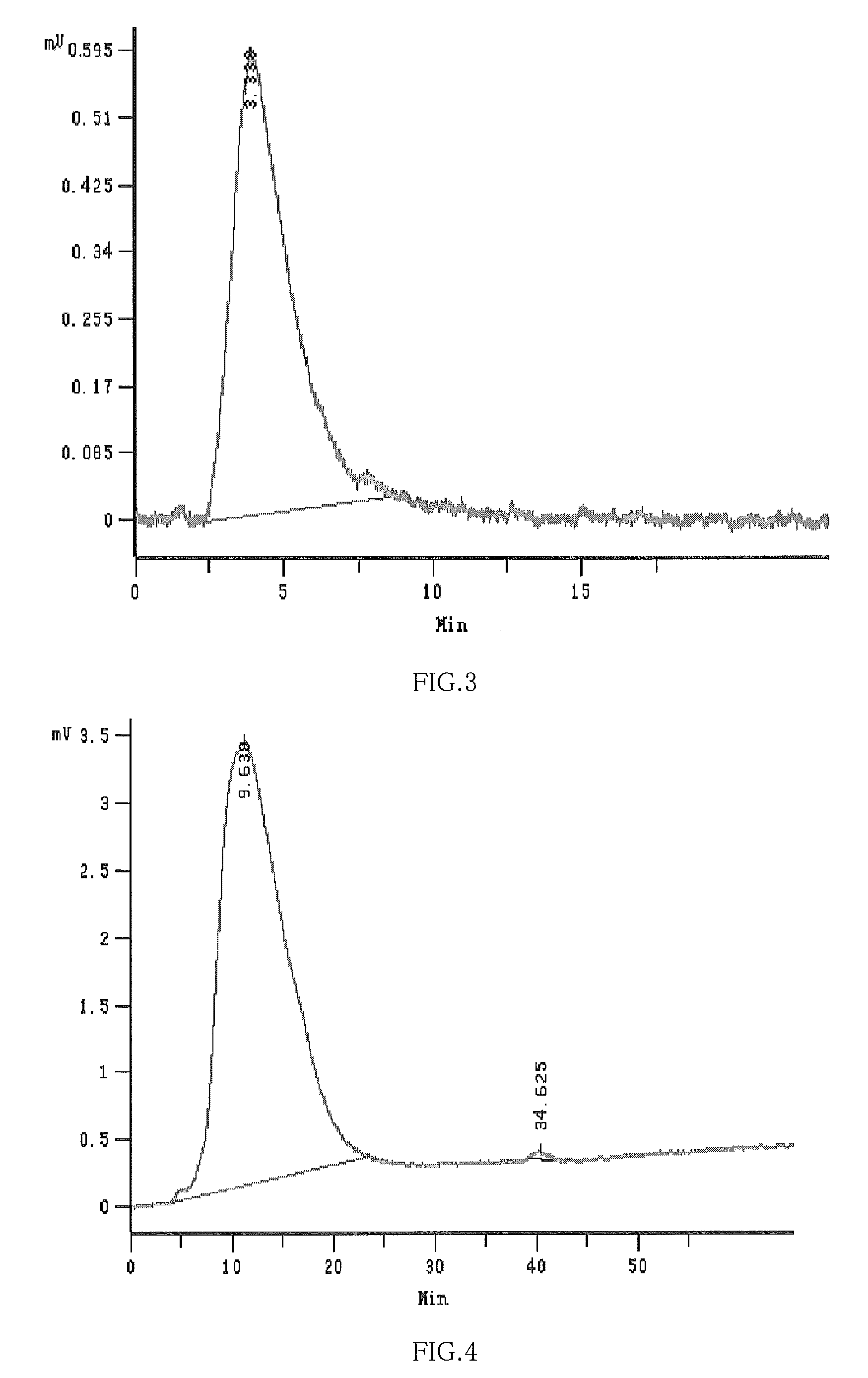Hydroxypropyl-Sulfobutyl-Beta-Cyclodextrin, the Preparation Method, the Analytical Method, and the Pharmacutical Application Thereof
a technology of hydroxypropylsulfobutyl and cyclodextrin, which is applied in the field of hydroxypropylsulfobutyl cyclodextrin, can solve the problems of single structure, too difficult to obtain the derivates of single degree of substitution, and restricted applications for its safety and solubility. , to achieve the effect of no effect on the nervous system
- Summary
- Abstract
- Description
- Claims
- Application Information
AI Technical Summary
Benefits of technology
Problems solved by technology
Method used
Image
Examples
example 1
[0098]0.02 mol β-Cyclodextrin, 0.11 mol NaOH and 45 ml H2O were added into 3-neck round flask with isobarically funnel, reflux-condenser, and thermometer respectively; then stirred to dissolve completely and heated them to about 75° C.-80° C. and kept it in constant temperature, and then 0.08 mol 1,4-butane sultone was added within 3 hours, and continued to stir about 2 hours then cooled down to the normal temperature about 20° C.; 0.08 mol 1,2-Propylene Oxide was slowly pipetted for about 3 hours; continued to stir for 5 hours and PH value was adjusted to neutral with hydrochloric acid; filtered and the residual β-cyclodextrin and the resultant 1,2-propanediol and γ-hydroxy butyrate sodium were removed by filterate dialysis. After 8-10 times of dialysis, the mixture was dried under the condensed and pressure reduction condition, and the 25.7 g of white-like solid substance was obtained, yield of 111.7%. Each value of 1HNMR spectrum (See annex 12) was analyzed as follows:
Peakppmassi...
example 2
[0102]0.02 mol β-Cyclodextrin, 0.04 mol NaOH and 90 ml 1120 were added into 3-neck round flask with isobarically funnel, reflux-condenser, and thermometer respectively; then stirred to dissolve completely and 0.03 mol 1,2-propylene oxide was slowly pipetted for about 2 hours when stirred at 20° C.; continued to stir for reacting for 6 hours, 0.3 mol NaOH was added, heated to about 75° C.˜80° C., then 0.03 mol 1,4-Butane sultone was slowly pipetted for about 3 hours, continued to stir for reacting 5 hours, and then cooled to the room temperature, and PH value of the mixture was adjusted to neutral with hydrochloric acid; filtered and the residual β-cyclodextrin and the resultant 1,2-propanediol and γ-hydroxy butyrate sodium were removed by filterate dialysis. After 8-10 times of dialysis, the mixture was dried under the condensed and pressure reduction condition, and 25 g of white-like solid substance was obtained, yield of 108.7%. The average degree of substitution of hydroxypropyl ...
example 3
[0103]the procedure was carried out basically the same as example 1, but wherein, 70 ml of water was added, and the feeding quantity of NaOH, 1,4-butane sultone and 1,2-propylene oxide were 0.20, 0.16, 0.10 mol respectively, the final product yield is 105.5%. The average degree of substitution of hydroxypropyl was 5.6 and the average degree of substitution of sulfobutyl was 2.6 by 1HNMR validation (FIG. 15), abbreviated as HP3-SBE6-β-CD.
Example 4
[0104]the procedure was carried out basically the same as example 1, but wherein, the feeding quantity of NaOH, 1,4-butane sultone and 1,2-propylene oxide were 0.15, 0.12, 0.115 mol respectively, the final product yield is 104.35%. The average degree of substitution of hydroxypropyl was 3.2 and the average degree of substitution of sulfobutyl was 4.3 by 1HNMR validation (FIG. 15), abbreviated as HP3-SBE4-β-CD.
PUM
| Property | Measurement | Unit |
|---|---|---|
| molar ratio | aaaaa | aaaaa |
| molar ratio | aaaaa | aaaaa |
| retention time | aaaaa | aaaaa |
Abstract
Description
Claims
Application Information
 Login to View More
Login to View More - R&D
- Intellectual Property
- Life Sciences
- Materials
- Tech Scout
- Unparalleled Data Quality
- Higher Quality Content
- 60% Fewer Hallucinations
Browse by: Latest US Patents, China's latest patents, Technical Efficacy Thesaurus, Application Domain, Technology Topic, Popular Technical Reports.
© 2025 PatSnap. All rights reserved.Legal|Privacy policy|Modern Slavery Act Transparency Statement|Sitemap|About US| Contact US: help@patsnap.com



